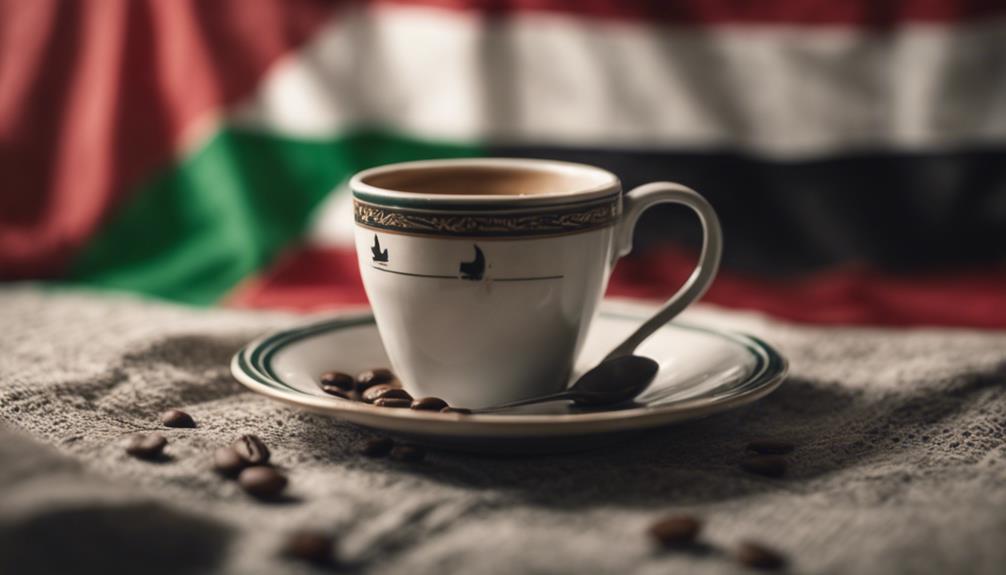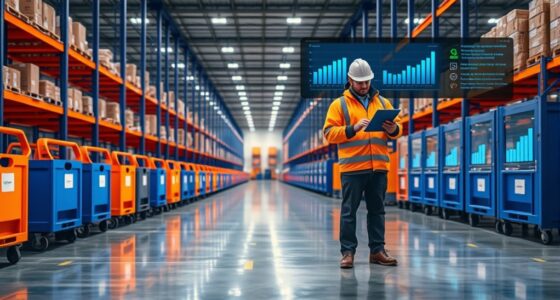Did you know that the makers of popular energy drinks such as Red Bull and Monster are currently engaged in legal battles in Washington? They are facing challenges involving regulations on caffeine levels and ingredients in their beverages amidst concerns about health risks. The FDA is evaluating the safety of these drinks, including their potential association with fatalities. Additionally, Congress is closely monitoring these companies as public apprehension continues to escalate.
These beverage firms are defending their products’ safety. They hired lobbyists to tell policymakers, including Congress, about their drinks’ benefits and safety. For example, Red Bull North America got lobbying help from Heather Podesta & Partners and others in late 2012. Monster Energy Co. spent $100,000 on Covington & Burling for the same reason. Their work shows how the caffeine lobby wants to impact U.S. politics1.
But as these companies defend their drinks, concern is rising. The FDA found scary things, like links between energy drinks and deaths. Five Hour Energy faced an FDA look-see after 13 death reports. Senators Durbin and Blumenthal and Rep. Markey started an investigation into energy drinks’ caffeine and marketing1.
Legal troubles and public eyes are pressuring energy drink makers more. New York’s Attorney General and San Francisco’s Mayor took steps against these companies. They’re worried about claims and the safety of products. For instance, Monster had to deal with a lawsuit after a young girl’s death was linked to their drink1.
The fight isn’t just about energy drinks. Coffee and tea also bring a lot of caffeine to our diets, says a 2009 FDA report. With one-third of young adults’ caffeine coming from these drinks, there’s concern across all ages. Rep. Cassidy in Maine wants to stop sales of high-caffeine drinks to people under 18. This shows growing worry about our caffeine habits2.
The caffeine lobby’s power in politics is clear as they push on debates and rules about energy drinks and caffeine. Yet, the struggle continues with more checks and talks happening. Americans are thinking hard about caffeine and health. And the caffeine lobby is still a big player in political talks. ‘s involvement remains pivotal.
Key Takeaways:
- The caffeine lobby is engaging in a legislative battle over the regulation of energy drinks and other caffeinated products in the United States.
- The makers of energy drinks, such as Red Bull and Monster, have hired lobbying firms to advocate for their interests and influence U.S. politics.
- The FDA has launched investigations into the potential health risks associated with highly caffeinated energy drinks.
- Public concerns and legal actions have put pressure on energy drink manufacturers to prove the safety of their products.
- Legislation has been introduced at both the federal and state levels to address concerns about caffeine consumption, particularly among young adults.
Lobbying Efforts and Public Concerns
After the FDA began investigating energy drinks, companies like Red Bull and Monster Energy got busy. They hired lobbying firms3. These firms help them communicate their concerns about new rules.
Red Bull North America picked Heather Podesta & Partners and another firm3. These lobbyists talk to Congress and others, explaining the beverage business.
Monster Energy chose Covington & Burling for similar reasons3. Their goal is to manage new policies with expert help.
Senators worried about energy drinks have put the FDA on alert3. Such concerns led to serious talks between the government and drink makers.
The beverage industry, which includes soft drinks, often lobbies in Washington3. They’ve spent a lot to fight taxes that would pay for health care.
Rockstar has joined the lobbying game with nine experts from Podesta Group3. This lets them be part of discussions on energy drink rules.
There are debates over caffeine in energy drinks4. A bill to limit caffeine was rejected by the Senate. But, talks continue with input from Herbalife and others4. The Natural Products Association is also involved.
These lobbying efforts show the debates over caffeine and drink rules are complex. Lawmakers are trying to find a good balance for everyone.
Public Concerns: Health Risks and Investigations
Energy drinks have various caffeine levels, says Consumer Reports4. Too much caffeine can be dangerous. The dangers include seizures or even worse.
The FDA is checking out brands like “5-Hour Energy” because of health concerns3. They want to make sure these drinks are safe.
The Role of Lobbying Firms and Their Influence
Companies lobby to get their views known on energy drink policies3. They hire pros to ensure their voice is heard.
But, this raises questions about lobbying’s impact on the decisions made. The big money spent by drinks giants like Coca-Cola stirs up debate35.
The Dubious Role of Lobbying: Transparency and Accountability
In 2020, the top 30 food and beverage makers spent a lot on lobbying5. Coca-Cola was the biggest spender of them all. AB InBev was not far behind5. This shows how much they’re willing to spend to influence policy.
Even though spending has dipped a bit, lobbying remains key for these companies5. Their top concerns include taxes and trade. Coca-Cola, for example, also lobbies for health and eco policies.
This heavy lobbying worries some people. They fear it gives big companies too much power5. The need for transparency and fairness is clear.
Influencing Policy and Protecting Public Health
Lobbying, public worries, and health issues create a tough situation. Balancing industry interests with public health is important.
Officials must look at all evidence and keep an open dialogue. This way, new rules will protect health and be fair to everyone.
Maine Legislation and Lobbying Efforts
In Maine’s 126th Legislature, Rep. Katherine Cassidy introduced a bill. It aimed to stop the sale of high-caffeine drinks to those under 18. This proposal led to a big debate, pulling in the caffeine lobby and groups worried about sales to minors. Red Bull America, hiring Maine Street Solutions, became a key player opposed to the ban. They argued the issue was about caffeine content in all drinks, not just energy drinks for minors.
Maine Street Solutions used the FDA’s view on caffeine to support their argument. They told lawmakers that, if used right, energy drinks are safe. They stressed that these drinks follow safety laws, hoping to change how legislators saw the issue6.
The bill went through many changes during the debate. A task force was set up to consider a public health campaign on caffeine drinks. In the end, the bill didn’t pass. This shows how hard it is to deal with youth energy drink use, balancing health worries and personal choice6.
Lobbying on energy drinks in Maine drew a lot of attention and money. But the fight over a tobacco ban bill saw even more spending. Another bill, allowing towns to charge cable companies fees, was passed without Gov. Janet Mills’ signature. This showed how powerful the caffeine lobby can be in shaping laws6.
| Lobbying Effort | Spending |
|---|---|
| Tobacco Ban Bill | About $158,000 |
| National Anti-Tobacco Group Advertisements | $125,000 |
| Cable Providers Fees Bill | — |
Many different issues saw lobbying in Maine, including data privacy, with $50,000 spent. Altria Client Services LLC gave over $31,000 to Jon Shaer for lobbying. The Augusta firm spent roughly $531,000 in total, making it the biggest spender. With five lobbyists and 35 clients, their efforts show the scope of lobbying in Maine6.
Maine Cities Taking Action
Some Maine cities have banned flavored tobacco due to health risks from energy drinks. Hallowell, Bar Harbor, and others passed these laws locally. This shows towns working to protect health when there’s no state law6.
The Growth of Coffee Culture and Corrective Literature
The rise of coffee culture is a big deal these days. It has led to more coffeehouses and made coffee a symbol of modern city life and bonding. Coffee is now seen as something special, not just a drink but a whole culture. It’s about how it’s brewed, its tastes, and the ways we enjoy it. This love for coffee has also sparked a new kind of book genre, known as corrective literature.
Corrective literature dives into the coffee world’s hidden dark sides. It talks about the bad parts of coffee’s past and present, like colonialism and harming the environment. Books like “The Devil’s Cup” by Stewart Lee Allen and “Coffeeland” by Augustine Sedgewick shine a light on these issues. They give us a deep look at the coffee business and its effects on people’s lives.
This type of writing shows us the other side of coffee culture. It questions the idea that coffee is just a cool trend. It talks about the hard truths in the global coffee business. By doing this, these books hope to make people think more about where their coffee comes from.
Brian Cowan’s book, “The Social Life of Coffee: The Emergence of the British Coffeehouse”7, digs into how coffee culture started and its effects on society. Cowan explores how coffee became popular and how it influenced culture and people from different backgrounds.
He also talks about coffeehouses being important places for chatting and sharing ideas. Yet, he points out that women often were left out. Cowan also mentions how the government didn’t always like coffeehouses, viewing them with suspicion.
The growth of coffee culture and the rise of corrective literature show us there’s more to our coffee love than meets the eye. They encourage coffee drinkers to think more about the impact of their choices.
Note: The image above illustrates the diverse and vibrant coffee culture that has emerged in recent years.
Conclusion
The influence of the caffeine lobby in American politics regarding energy drinks has sparked investigations. It’s also led to calls for stricter regulations and raised public health concerns8. While beverage companies deny their products cause harm, investigations by the FDA and actions from officials show growing safety concerns. The rise of coffee culture and emerging literature highlight the hidden costs of caffeine. This includes exploitation in its production and consumption. The debate on the caffeine lobby’s role on health and trade continues in the U.S.
About 90% of people worldwide consume caffeine regularly, making it the most commonly used drug8. Coffee cultivation and coffeehouses greatly influenced the intellectual scene in England and France in the 17th century8. Research shows that 80% of American adults consume caffeine every day. Moderate intake can lower the risk of depression and suicide9. But, too much caffeine can cause “coffee intoxication” and withdrawal symptoms9. It’s important to enjoy caffeine’s benefits while knowing its risks.
Energy drink sales, especially by big brands like Red Bull, show how common caffeine use is and its economic role10. An 8.3-ounce can of energy drink has much more caffeine than soda10. Starbucks’ growth highlights the expanding coffee market10. As a popular drug, caffeine has even surpassed nicotine and alcohol. It’s essential for moving from farm to factory work10. Caffeine affects sleep and is used to fight jet lag. Increasing concerns about global sleep loss call for more regulation and awareness10.
In conclusion, the caffeine lobby’s politics and rising health concerns highlight the need for rules and education. We must balance enjoying caffeine with understanding its downsides. The discussions about caffeine’s role in health, society, and economy will shape future policies and choices.









